
Healthcare insurance company Molina Healthcare (NYSE: MOH) beat Wall Street’s revenue expectations in Q2 CY2025, with sales up 15.7% year on year to $11.43 billion. On the other hand, the company’s full-year revenue guidance of $44 billion at the midpoint came in 0.6% below analysts’ estimates. Its non-GAAP profit of $4.75 per share was 14.1% below analysts’ consensus estimates.
Is now the time to buy Molina Healthcare? Find out by accessing our full research report, it’s free.
Molina Healthcare (MOH) Q2 CY2025 Highlights:
- Revenue: $11.43 billion vs analyst estimates of $10.95 billion (15.7% year-on-year growth, 4.4% beat)
- Adjusted EPS: $4.75 vs analyst expectations of $5.53 (14.1% miss)
- Adjusted EBITDA: $434 million vs analyst estimates of $481.8 million (3.8% margin, 9.9% miss)
- Management lowered its full-year Adjusted EPS guidance to $19 at the midpoint, a 22.4% decrease
- Operating Margin: 3.3%, down from 4.4% in the same quarter last year
- Free Cash Flow was -$344 million compared to -$246 million in the same quarter last year
- Customers: 5.7 million, down from 5.75 million in the previous quarter
- Market Capitalization: $9.79 billion
“Our second quarter results and revised full year outlook reflect a challenging medical cost trend environment,” said Joseph Zubretsky, President and Chief Executive Officer. “The current earnings pressure we are experiencing results from what we believe to be a temporary dislocation between premium rates and medical cost trend which has recently accelerated. We are still performing near our long-term target ranges, and nothing has changed our outlook for the long-term performance of the business.”
Company Overview
Founded in 1980 as a provider for underserved communities in Southern California, Molina Healthcare (NYSE: MOH) provides managed healthcare services primarily to low-income individuals through Medicaid, Medicare, and Marketplace insurance programs across 21 states.
Revenue Growth
Examining a company’s long-term performance can provide clues about its quality. Any business can experience short-term success, but top-performing ones enjoy sustained growth for years. Thankfully, Molina Healthcare’s 19.7% annualized revenue growth over the last five years was impressive. Its growth surpassed the average healthcare company and shows its offerings resonate with customers, a great starting point for our analysis.
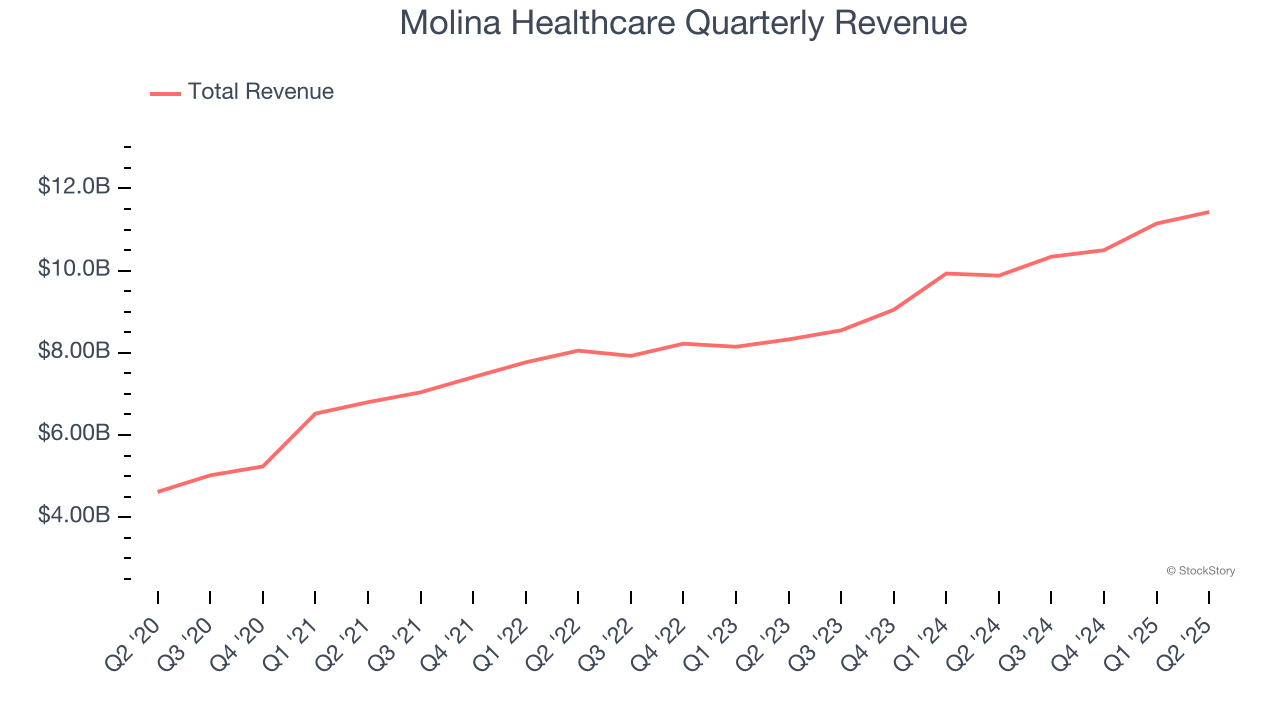
We at StockStory place the most emphasis on long-term growth, but within healthcare, a half-decade historical view may miss recent innovations or disruptive industry trends. Molina Healthcare’s annualized revenue growth of 15.4% over the last two years is below its five-year trend, but we still think the results suggest healthy demand. 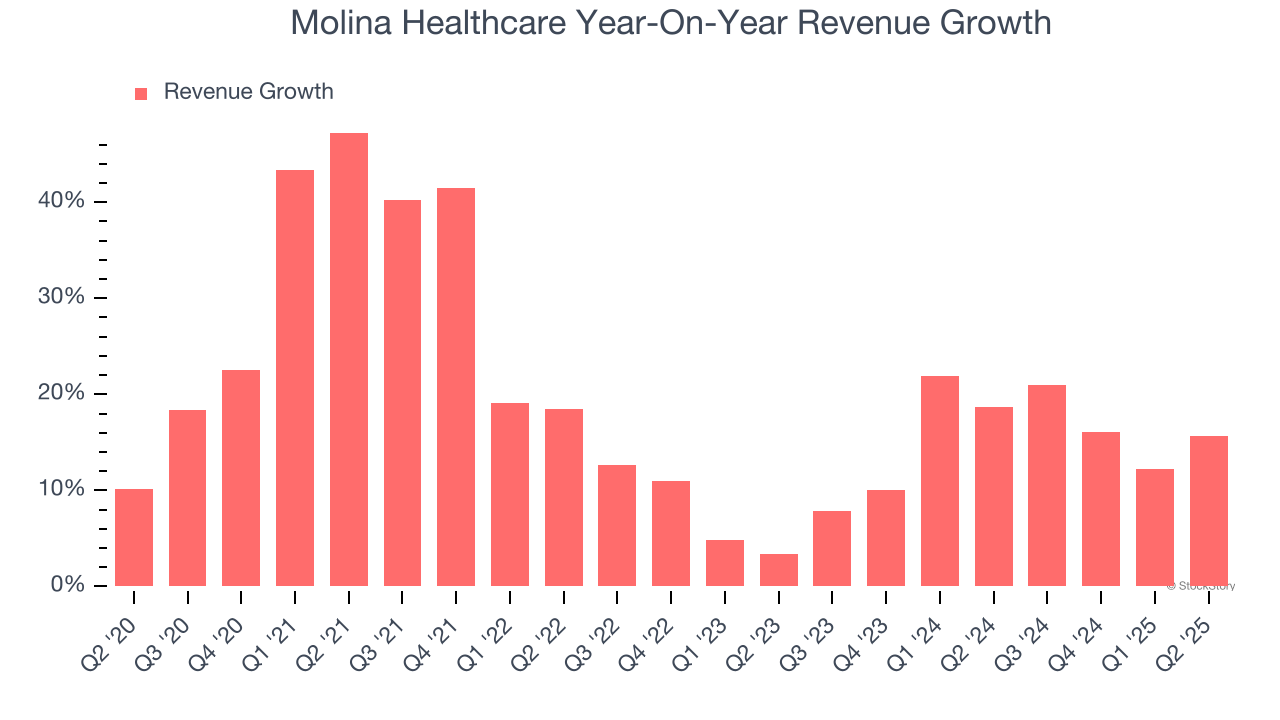
Molina Healthcare also reports its number of customers, which reached 5.7 million in the latest quarter. Over the last two years, Molina Healthcare’s customer base averaged 4.1% year-on-year growth. Because this number is lower than its revenue growth, we can see the average customer spent more money each year on the company’s products and services. 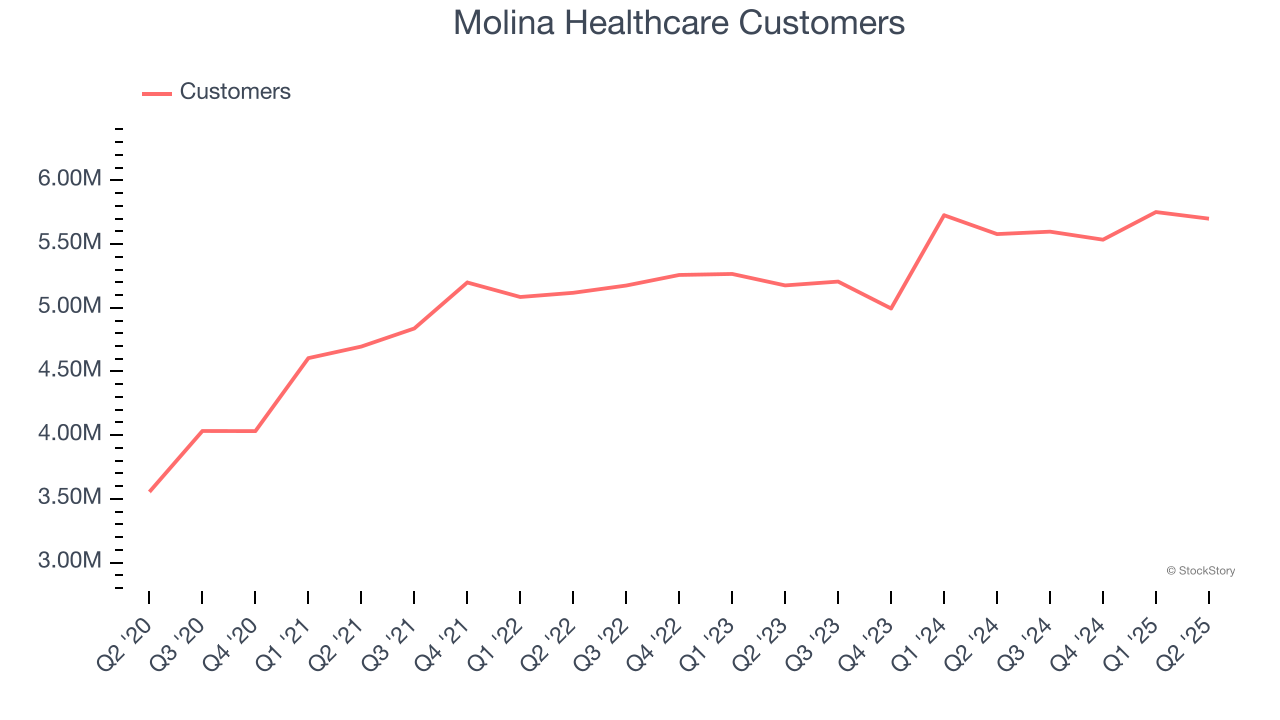
This quarter, Molina Healthcare reported year-on-year revenue growth of 15.7%, and its $11.43 billion of revenue exceeded Wall Street’s estimates by 4.4%.
Looking ahead, sell-side analysts expect revenue to grow 5.6% over the next 12 months, a deceleration versus the last two years. We still think its growth trajectory is satisfactory given its scale and implies the market sees success for its products and services.
Unless you’ve been living under a rock, it should be obvious by now that generative AI is going to have a huge impact on how large corporations do business. While Nvidia and AMD are trading close to all-time highs, we prefer a lesser-known (but still profitable) stock benefiting from the rise of AI. Click here to access our free report one of our favorites growth stories.
Operating Margin
Molina Healthcare’s operating margin might fluctuated slightly over the last 12 months but has remained more or less the same, averaging 4% over the last five years. This profitability was paltry for a healthcare business and caused by its suboptimal cost structure.
Looking at the trend in its profitability, Molina Healthcare’s operating margin might fluctuated slightly but has generally stayed the same over the last five years. This raises questions about the company’s expense base because its revenue growth should have given it leverage on its fixed costs, resulting in better economies of scale and profitability.
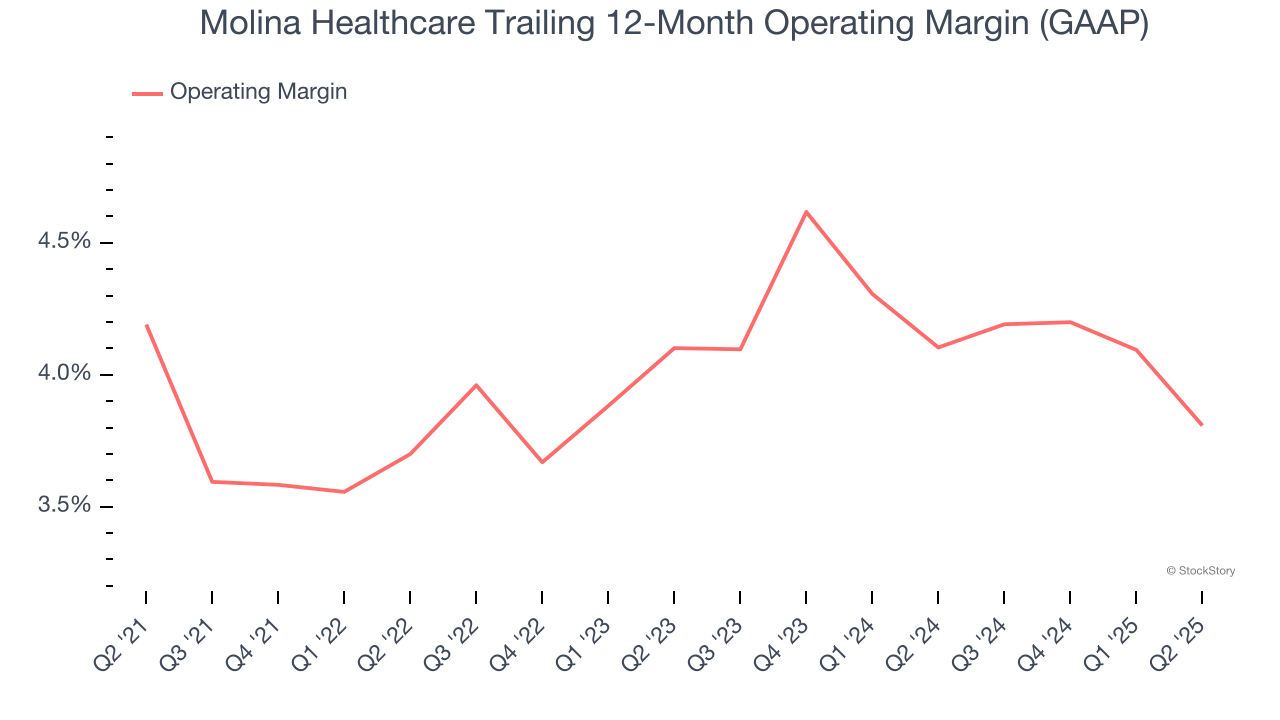
This quarter, Molina Healthcare generated an operating margin profit margin of 3.3%, down 1.1 percentage points year on year. This reduction is quite minuscule and indicates the company’s overall cost structure has been relatively stable.
Earnings Per Share
Revenue trends explain a company’s historical growth, but the long-term change in earnings per share (EPS) points to the profitability of that growth – for example, a company could inflate its sales through excessive spending on advertising and promotions.
Molina Healthcare’s EPS grew at a remarkable 10.4% compounded annual growth rate over the last five years. However, this performance was lower than its 19.7% annualized revenue growth, telling us the company became less profitable on a per-share basis as it expanded due to non-fundamental factors such as interest expenses and taxes.
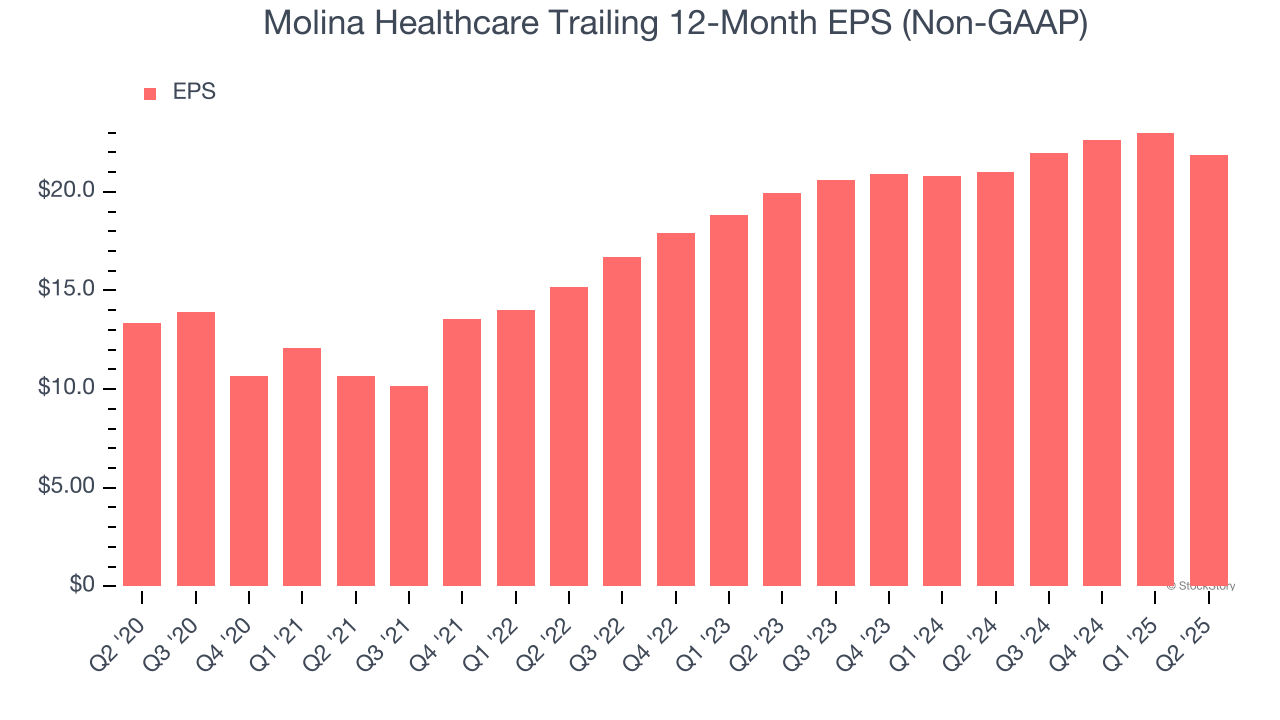
In Q2, Molina Healthcare reported EPS at $4.75, down from $5.86 in the same quarter last year. This print missed analysts’ estimates, but we care more about long-term EPS growth than short-term movements. Over the next 12 months, Wall Street expects Molina Healthcare’s full-year EPS of $21.89 to grow 8.8%.
Key Takeaways from Molina Healthcare’s Q2 Results
We enjoyed seeing Molina Healthcare beat analysts’ revenue expectations this quarter. On the other hand, its full-year EPS guidance missed and its EPS fell short of Wall Street’s estimates. Overall, this was a weaker quarter. The stock traded down 4% to $183 immediately after reporting.
Molina Healthcare underperformed this quarter, but does that create an opportunity to invest right now? The latest quarter does matter, but not nearly as much as longer-term fundamentals and valuation, when deciding if the stock is a buy. We cover that in our actionable full research report which you can read here, it’s free.





